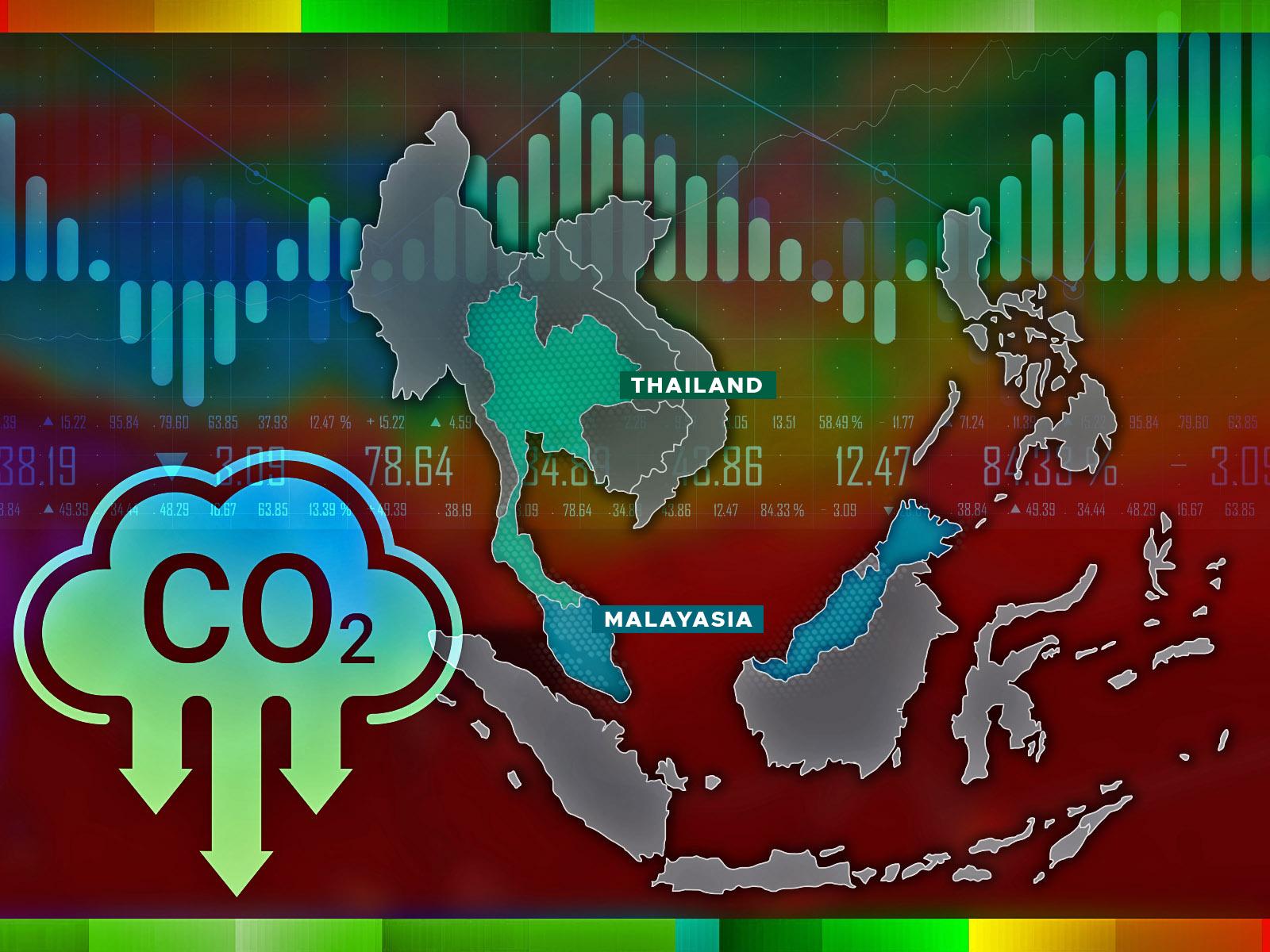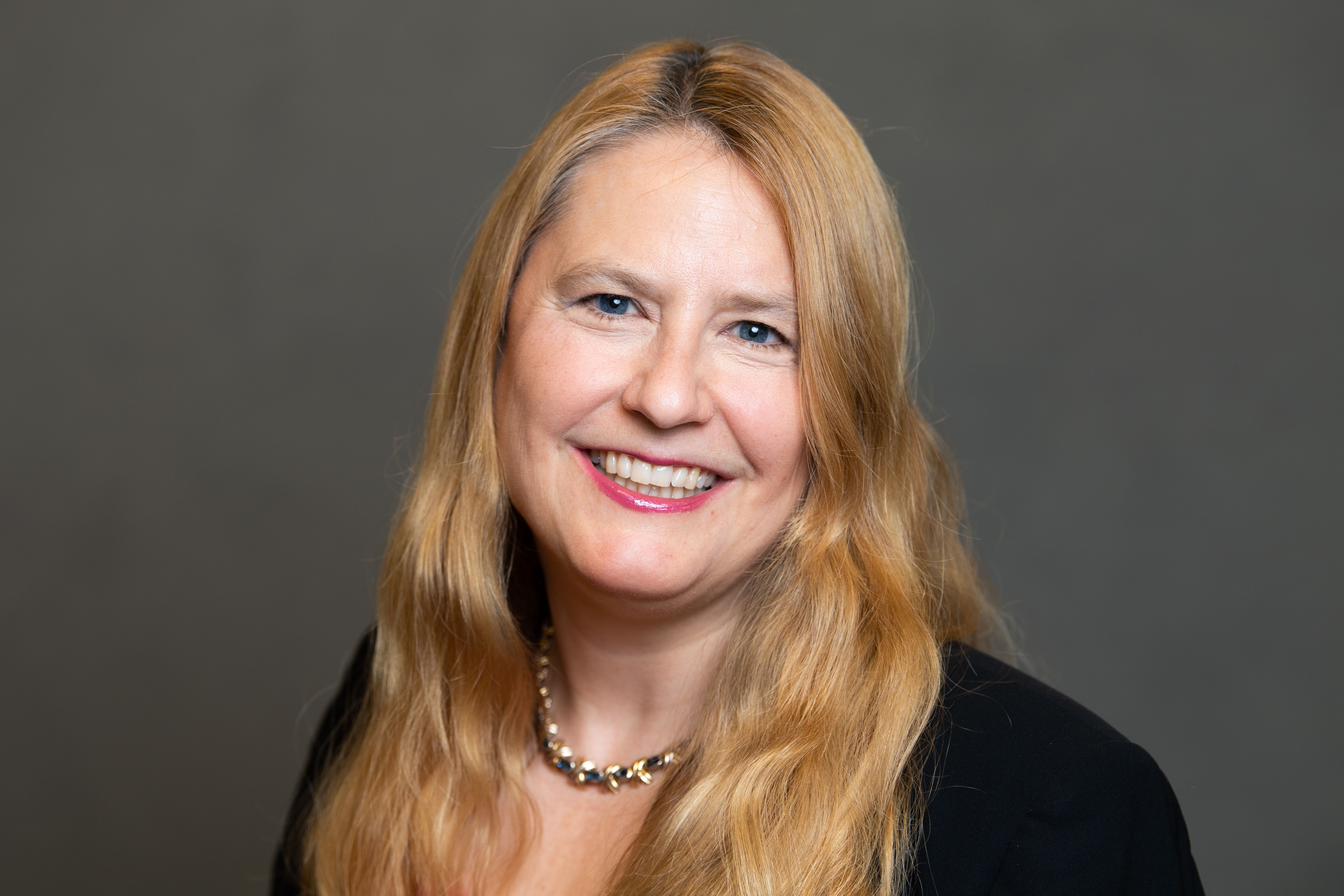PNNL Helps Malaysia and Thailand Chart Carbon-Neutral Course
U.S. State Department program pairs laboratory experts with SE Asian counterparts

With the help of the U.S. State Department, PNNL climate scientists assisted counterparts in Malaysia and Thailand in exploring carbon-neutral goals.
(Composite image by Timothy Holland | Pacific Northwest National Laboratory)
Climate scientists worldwide share a language called integrated assessment models (IAMs). The computer simulations make cost-benefit sense of policies affecting climate change.
For a team of Pacific Northwest National Laboratory (PNNL) researchers, the models were the common thread for a three-year project assisting counterparts in Malaysia and Thailand in exploring carbon-neutral pathways. The project produced recommendations for the two Southeast Asian nations, and it might pave the way for PNNL scientists to offer the laboratory’s climate science resources to other countries in the region.
“Southeast Asia is undergoing rapid growth and urbanization, largely driven by cities,” said Meredydd Evans, project lead and an Earth scientist at the Joint Global Change Research Institute (JGCRI), a collaboration between PNNL and the University of Maryland. “While that’s vital for thriving economies, this growth has led to increasing energy demand and a challenge to the region’s carbon neutrality goals."
Climate science collaboration starts at U.S. State Department

The three-year project sprung from the U.S. State Department, Bureau of Energy Resources, Power Sector Program, in support of the Clean EDGE Asia initiative and the U.S.-ASEAN Smart Cities Partnership. “The State Department recognized a need for deeper analysis of several Southeast Asian countries at the national level on both resilience and decarbonization,” Evans said. “At the same time, there was a special emphasis on examining the role of cities in future energy resilience as well as decarbonization.”
Evans and her team worked with climate scientists at Thammasat University in Bangkok, Thailand, and the University of Technology Malaysia in Kuala Lumpur. The researchers forged partnerships with local decision-makers across national and city levels, encompassing ministries of environment, climate, energy, and electricity authorities. The partnership and three-year project culminated in November when participants presented their findings at the Asia-Pacific Climate Week.
“For both Malaysia and Thailand,” Evans said, “it will be important that there be a multi-level governance approach, shaping a pathway to their climate goals.”
PNNL-developed assessment model boosts project
If integrated assessment models are the common language among climate scientists, the Global Change Analysis Model (GCAM) is one of its broadly spoken dialects. GCAM owes its development more than three decades ago to a handful of climate researchers, especially Jae Edmonds, a PNNL Lab Fellow and economist at JGCRI.
The PNNL team, working with their Southeast Asian partners, conducted the climate analyses using GCAM, an IAM that factors in socioeconomic, energy, land, water, and climate systems to make impact projections.
“GCAM worldwide has been especially useful for climate scientists to obtain insights into potential ways to reduce emissions globally,” Evans said. “In Malaysia, our project bolstered effective multi-level governance strategies and supplemented the net-zero, carbon-neutral, digitalization, and Smart City road map plans that already were being used in Thailand and Malaysia.”
Malaysia targets carbon neutrality by 2050

As the third highest emitter of carbon dioxide per capita in Southeast Asia, Malaysia has pledged to reduce its economy-wide carbon intensity by 45% by 2030 compared to the level in 2005. In addition, Malaysia has a goal to reach carbon neutrality as early as 2050. However, the country does not have any national decarbonization strategies beyond 2040.
“Malaysia and the leadership in Kuala Lumpur—its capital and its largest city—have developed these in-depth climate plans that have a lot of details and are really thought through,” said Maridee Weber, an Earth scientist at PNNL who worked closely with government leaders and climate experts at the University of Technology Malaysia. “The expected impacts of climate change are motivating them to make these transitions and to reduce their emissions.”
In 2020, Malaysia’s power generation was about 50% coal, 35% natural gas, and 15% renewable, mostly from hydropower.
Through meeting local officials, and while tapping the power of GCAM, Weber helped guide participants to a set of goals that could help the country achieve carbon neutrality. The recommendations include:
- Electrification and decarbonization: Malaysia is well positioned to increase renewable energy capacity through solar and hydropower due to abundant sunlight, high rainfall, and its natural topography.
- Energy efficiency and demand side measures: Adopting newer, energy-efficient technologies and appliances can provide significant opportunities for decarbonizing buildings and industrial processes.
- Leveraging advanced technologies: Carbon capture and storage (CCS)—a process that captures carbon dioxide emissions from sources like coal-fired power plants and either reuses or stores it so it will not enter the atmosphere—could mitigate emissions.
- Benefits of engaging in multi-level governance: Multi-level governance, cooperation, and synchronization are crucial to align city policies with national goals.
Weber’s work with Malaysian officials included participation in the Women in Energy Conference, held in August in Kuala Lumpur, sponsored by the U.S. Embassy in Kuala Lumpur and Malaysia Women in Energy. “The event was perfectly timed,” Weber said. “It gave me an opportunity to talk about the Smart Cities Partnership as well as the importance of women's input in decarbonization goals.” Brian McFeeters, U.S. ambassador to Malaysia, delivered the opening remarks.
Weber said the project overall was rewarding. “I really enjoyed the city-level modeling aspect of the project,” she said. “It was gratifying to work directly with Malaysian stakeholders. I think our shared goals, and work toward those goals, was pretty exceptional.”
Thailand sets a carbon neutrality goal by 2050

Increasing average temperature along with severity and frequency of floods, droughts, and storms imperils Thailand and jeopardizes major economic sectors, including agriculture, tourism, and industry. In response, the nation has set a target of carbon neutrality by 2050 and net-zero greenhouse gas emissions by 2065.
The nation has developed a long-term Low Greenhouse Gas Emission Development Strategy, released in 2022, as well as other carbon-reduction plans, including one guiding a path toward alternative energy through 2037. As of 2020, Thailand’s power generation was about 60% natural gas, 20% coal, and 20% renewable.
Against this backdrop, Taryn Waite, an Earth scientist at PNNL, spent three years collaborating with government officials as well as climate researchers at Thammasat University in Bangkok, developing additional carbon neutrality scenarios. GCAM was a constant partner throughout the process.
"Our partners at Thammasat were already familiar with integrated assessment models and the role they play in crafting carbon reduction goals,” said Waite, who visited Thailand twice during the collaborative process and met often in teleconferences. “They quickly recognized the value of GCAM. The adoption of GCAM was essential for the productivity of this project.”
“The use of integrated assessment modeling is something that is not done as frequently in Southeast Asia,” said Waite, who visited Thailand twice during the collaborative process and met often in teleconferences. “That said, our partners at Thammasat already were familiar with assessment modeling. They became even more so after working with GCAM.”
These goals were set at the project’s conclusion:
- Continuing support for the development of smart grid technologies such as load forecasting, demand response systems, distributed energy sources, and smart electric vehicle charging stations; these technologies will help Bangkok and Thailand maintain grid stability while integrating more renewable energy into the power supply.
- Minimizing costs, providing incentives and finance opportunities, and increasing regulatory measures to speed up the transition to more efficient appliances and industrial technologies as well as electric vehicles.
- Establishing robust legal and regulatory frameworks as well as funding pathways for advanced technologies such as CCS and hydrogen production scales.
- Re-evaluating Thailand’s potential level of sequestration from reforestation and other land-based strategies and assessing tradeoffs between investment in these strategies versus energy system measures.
Participants presented this and the Malaysia climate plan at a session linked with Asia-Pacific Climate Week, held in Malaysia last November.
“From the start, we envisioned sharing our research with a wider audience,” said Evans, the team leader. “The State Department’s help made this productive three-year collaboration possible. PNNL will continue to deepen its relationship with Malaysia and Thailand. Our hope is to share best practices with other countries in the region.”
Published: February 16, 2024